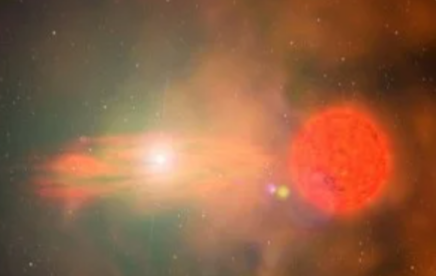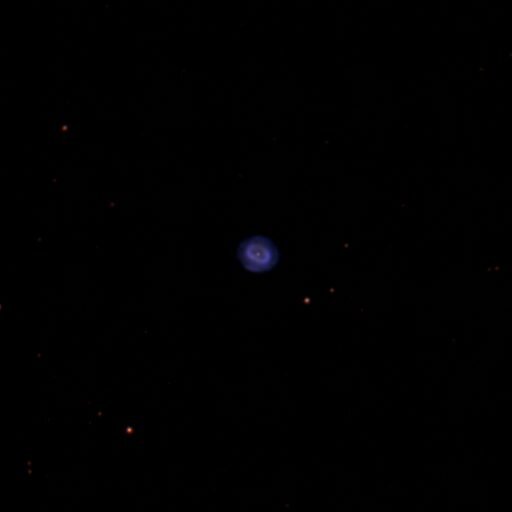What kind of supernova are we talking about?
A supernova called LSQ14fmg is located 100 million light years from ours
What is this type?
Type Ia supernovae are a clear example of how an extinct white dwarf star is not as safe as we used to think.
Type Ia supernovae are starsor rather, flashes of light that are the result of the explosion of a long-extinct cosmic star—a white dwarf. In the previous sentence we simplified the definition of a white dwarf somewhat. Speaking strictly scientifically, this object is a burnt-out star whose thermonuclear reactions have stopped. Most stars in the Universe end their life cycle in this way. It turns out that a white dwarf is the crown of evolution of a star with a mass approximately the same as that of our Sun.
 Type Ia supernova formation
Type Ia supernova formation
This was considered until recently, while scientistsno type Ia supernovae have been found. Supernovae of type Ia or a supernova explosion is a conventional name for a physicochemical reaction inside a white dwarf, which leads to a rather powerful explosion. During this explosion, a fairly large amount of energy is released. In addition, the luminosity of the star simultaneously increases several thousand times.
If an ordinary supernova occurs due toexplosion of a lone white dwarf due to the processes occurring inside it, then the latest scientific theories say that type Ia supernovae are the result of the merger of two white dwarfs. Two white dwarfs located nearby are a fairly rare phenomenon in space. Nevertheless, such objects do occur in the Universe. Most often these are the remnants of binary star systems, gravitationally connected to each other.
A white dwarf is a "remnant" of a star thatcompleted its normal life cycle, thermonuclear reactions stopped, and the outer shell was shed during the process of evolution. That is, in fact, a white dwarf is the core of a former star, which can only cool down in the future.
However, the white dwarf is an extremelyhigh density and gravity, and it can accrete matter. This primarily occurs in binary systems, where the second and initially lighter, and hence less evolved component has approached the red giant stage.
It is important to bear in mind that White's double systemsdwarfs in space are rare enough. As a rule, there are only a few of them in a thousand found binary star systems. The process of merging two white dwarfs before the outbreak of a type Ia supernova is a rather long process, which on average takes 60 million years.
What are the flares and explosions from such supernovae?
A binary system consisting of a white dwarf andan ordinary star, is the cause of a type Ia supernova. The stars, bound by the forces of gravitational attraction, are gradually attracted to each other. As soon as matter from the star begins to flow to the white dwarf, its mass begins to gradually increase. As soon as it crosses the Chandrasekhar threshold of 1.38 solar masses, the temperature of the white dwarf's core begins to rise rapidly until it reaches the temperature of carbon burning.
Caused by the overflow of matter from two starsthermonuclear reactions on the white dwarf are the cause of its further explosion, which astronomers call a type Ia supernova. During this explosion, a huge amount of energy and light is released. If we compare the luminosity of a type Ia supernova with the luminosity of the main star of the solar system, then we can conclude that a supernova emits an amount of light about 10 thousand times more than our Sun.
All Type Ia supernovae have the samethe mechanism of the outbreak. In addition, due to the homogeneity of the white dwarf mass, Type Ia supernovae have the same maximum luminosity. That is, if we take the brilliance of two Type Ia supernovae located at an equidistant distance from the observer, their luminosities will be the same.
 Spectrum of type Ia supernova SN1998aq, one day after the outburst maximum
Spectrum of type Ia supernova SN1998aq, one day after the outburst maximum
Type Ia supernova life is justmoment, flash, explosion. However, due to the fact that most such objects are located at a considerable distance from the solar system, we can observe an intense stream of light emanating from such a star over a long period of time. We always observe a type Ia supernova explosion after the fact - the star that released this light has not actually existed for a long time.
So her observation is a kind of look intopast. For example, now earthlings can observe the Crab Nebula - the remnants of a supernova explosion that was seen by Arab and Chinese astronomers on July 4, 1054. The flash was visible for 23 days with the naked eye, even in the daytime. In 1968, the pulsar PSR B0531 + 21 was discovered in the center of the nebula, emitting in the X-ray and radio ranges, which is a neutron star left after a supernova explosion, its diameter is about 25 km.
How did scientists see the explosion?
The star was discovered using telescopes,located in South America and Europe. Scientists were able to determine that the supernova caused the cosmic material surrounding it to emit strong radiation: this indicates the radioactive decay of nickel and the formation of carbon monoxide.
It was a truly unique and strange event, and our explanation is just as interesting.
Article author
What happened?
The researchers analyzed the data obtainedwith telescopes in Chile and Spain. It turned out that a type Ia supernova (white dwarf explosion) caused the surrounding space material to emit strong radiation, indicating the radioactive decay of nickel and the formation of carbon monoxide. This allowed the experts to assume that they observed an explosion of a star, which belongs to the asymptotic giant branch (AGB), turning into a planetary nebula.
Stars of this type go through a kind of life cycle. They are so powerful that they explode to shape the evolution of galaxies, and are so bright that we can observe them from Earth.
The explosion was caused by the fusion of the core of the giant AGB anda white dwarf orbiting it. The central star lost a significant amount of mass due to stellar winds before the loss of mass suddenly ceased, and a ring of stellar matter was formed, often seen in planetary nebulae. The supernova shockwave collided with the ring, resulting in a slow increase in brightness.
 A snapshot of the Blue Snow Planetary Nebula,made by the Florida State University Observatory. Supernova LSQ14fmg exploded in a system similar to this, with a large loss of mass from the central star. When the loss of mass suddenly stopped, a ring of stellar material formed around the star / © Eric Hsiao
A snapshot of the Blue Snow Planetary Nebula,made by the Florida State University Observatory. Supernova LSQ14fmg exploded in a system similar to this, with a large loss of mass from the central star. When the loss of mass suddenly stopped, a ring of stellar material formed around the star / © Eric Hsiao
Scientists suggest they saw a star burst like thiscalled the asymptotic branch of giants (AGB, the period of stellar evolution through which all stars of medium and low mass pass at the end of their life path), turning into a planetary nebula.
What does this mean for the scientific community?
Scientists have obtained convincing evidence for the first timeevidence that a Type Ia supernova can explode in a system of giant stars on the path to becoming planetary nebulae. This is an important step in understanding the origin of these types of supernovae - until now, scientists knew little about them, except that they are the result of the explosion of white dwarfs.
The study of these objects will also help improve understanding of the nature of dark matter, because supernovae Ia are an important tool for studying it.
Read also:
Russian vaccine against COVID-19 entered civilian circulation, but there are many complaints about it
On day 3 of illness, most COVID-19 patients lose their sense of smell and often suffer from a runny nose
Scientists have found out why children are the most dangerous carriers of COVID-19